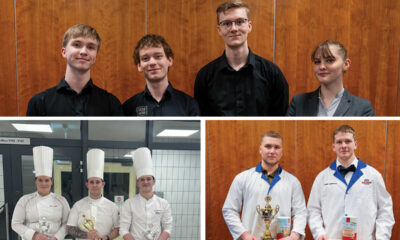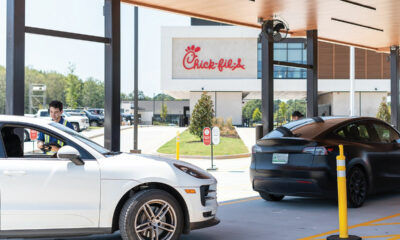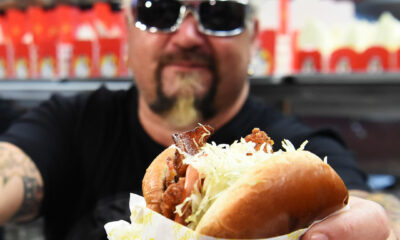Lifid
Is An Older Wines Better?
Shafer Vineyards Hillside Select Cabernet Sauvignon is one of the most-sought-after Napa Valley wines. Company president Doug Shafer is frequently asked how long it will age.
„Part of me wants to say, ‘Who cares?'“ Shafer says. „Does it taste good now? Does it work with what I’m eating? If you’re someone who wants to have the wine for 30 years, I’d also say, ‘Who cares?’ on that one too. It’s going to be very distant from what it was.“
That type of attitude would have been blasphemous in the wine world not long ago, when a wine’s ability to age — not its fruitiness — was considered the highest mark of quality. But today, Shafer can charge $175 a bottle and will not apologize if it’s not delicious in 15 years
Ageworthiness is „the opposite of how you should judge wine,“ says Mark Squires, a wine educator who runs the bulletin board for critic Robert M. Parker Jr.’s Web site, erobertparker.com. „It’s a historical anomaly.“
Some disagree. Rajat Parr, wine director at Michael Mina restaurant in San Francisco, says the obsession with youthful fruit is part of the American palate.
„The English like their wines much more mature, more nutty,“ Parr says.
Fanciers of older red wines also like their complexity, with notes of flowers and leather. They even develop an appreciation for changes in color, as once-dark red wines lighten and sometimes evolve into varying hues of brown and orange.
Some wine lovers prefer freshness and power to subtlety. And Larry Stone, general manager of Rubicon Estate in Rutherford, says during his time as a sommelier for restaurants including Rubicon in San Francisco, he encountered many customers who just didn’t understand older wines.
Once Stone sold a glass of 1945 Chateau Lafite Rothschild that he says „was perfect“ for $150 to a soon-to-be-unhappy customer.
„He didn’t like it. He thought it was light,“ Stone says. „He said, ‘Don’t wines get more intense as they get older?’ It’s actually the opposite.
„I enjoy wines that have developed aromas that are not just primary fruit aromas,“ Stone says. „You get minerality and floral aromas that might not be there in a young wine. It’s more complex. It’s more layered. It can even be more distinctive. But it’s not as intense. That’s the trade-off.“
Squires says many of the flavors that have been associated for decades with quality older wines — nutty notes in particular — are actually just characteristics of decay.
„The old wine fancier would tell you there’s incredible complexity and tertiary aromas,“ Squires says. „If they get all those things from wines with decaying fruit, good for them.“
Moreover, he says: „If you go to an old-wine tasting, the comments you hear about the wines people like best are: ‘Isn’t this wine fresh and young?’ It seems to be the best compliment you can give an old wine. You don’t hear people saying, ‘Wow, that’s so complex. I’ve never smelled aromas like this before.’ “
A fresh-tasting older wine, Squires says, „has performed a nice parlor trick in holding its freshness. Are you getting some magical experience? No.“
The debate over aging is happening worldwide as winemaking methods are modernizing everywhere, including in bastions of tradition like Bordeaux. Not all wines released today are meant to be drunk right away, but the recommended aging time for most has decreased dramatically.
„People are drinking the 2000 Bordeauxs right now,“ Parr says, explaining that in the past those wines would have been considered untouchable until at least 2010. „They’re so forward.“
Viticultural and winemaking practices have changed so much over the past 20 years that most wines are approachable far younger than before. Advances in refrigeration have changed the industry even more, Squires says.
„If you go back to the 18th century, storage was a major issue,“ he says. „Wines were made in a ferociously tannic style. They were made to be durable.“
Tannins, sugar and alcohol are three things that can protect wine from the ravages of heat and slow down its deterioration over time. This is why fortified wines like Port and Madeira were popular when shipping took months or years. Makers of dry red wines strengthened them by picking grapes earlier, when tannins are green and harsh.
Squires says Chateau Lafite Rothschild once sent its wines around the world on a ship „to bake them so they would be ready to drink.“ Without such risky heating — which can cause the cork to pop out, thus ruining the wine — wines simply had to be aged to be palatable.
Temperature-controlled shipping is a very recent development. Berkeley wine importer Kermit Lynch says he was one of the first to use it when he started his business in the 1970s. Cool shipping laid the groundwork for winemaking changes in the 1980s; without it, there would be no point to making wines’ tannins softer.
Nowadays, achieving soft, approachable tannins earlier is the focus of both university research and winemaking trial and error.
In the vineyard, growers are picking grapes later, which leads to riper, softer tannins. In the winery, winemakers are using better-designed equipment.
„We used to have presses that would macerate the heck out of (grape) skins. The finished wines would have an astringency,“ Shafer says. „There’s more awareness on winemakers’ part of what equipment can do if it’s too rough. We’re using gentler crushers and gentler presses.“
Ken Fugelsang, professor of viticulture and enology at California State University Fresno, says that as tannic wines age, they undergo chemical changes, some of which can be hurried along by modern methods such as micro-oxygenation, in which oxygen is injected into nascent wines to soften their tannins.
The goal is to bind tannin molecules to one another, or to protein from the grapes, in order to prevent them from binding with protein from saliva. This is why tannic wines literally dry your mouth.
„If you take that tannin molecule and wrap it up with protein, it doesn’t bind anything, it just tumbles along“ off the tongue, Fugelsang says.
The emphasis on immediate drinkability in winemaking is so recent that no good research exists on how long the best wines of today will last in the cellar.
Many speculate that very ripe Cabernet Sauvignons will fade quickly, partly because they are low in acidity. Acid protects wine from microbial infections. But as UC Davis enology professor Andy Waterhouse points out, „Researching this will take more years than we’ve had.“
Also, we can’t project that a certain winery’s product of today will age beautifully because its wine from the 1960s — made by different people using different methods — is still delicious.
At a private tasting of pre-1980 California wines last month, a favorite was an oddity, a 1970 Joseph Swan Vineyards Sonoma Gamay — made from the same grape used to make the world’s most notorious drink-now wine, Beaujolais Nouveau. It was rich with chewy tannins and concentrated black fruit and so much acidity that it could be felt in the backbone. There is probably no Gamay being made anywhere in the world today remotely like it.
But how tannic and tart must this wine have tasted in 1971, when it was probably released? If you tasted such a wine today, would you want to hang onto it for 35 years to see if it would calm down?
Linda Bartoshuk, a Yale University professor of otolaryngology (ear, nose and throat research), said at a seminar last summer in Napa that everyone begins to lose the ability to taste at about 60 years of age. Gradually nerve cells are lost, so it’s more difficult to appreciate the subtleties of aromatic wines like Pinot Noir, she says.
Fortunately, we never lose the ability to taste and enjoy sweetness, according to Bartoshuk. So maybe we’re doing it backward — we should drink the good Pinots and Cabernets now, and lay down the Ports and Madeiras not for our grandkids, but for ourselves.
„I think it’s better to drink a wine that’s too young than a wine that’s too old,“ says Stephane Lacroix, director of wine and sommelier for the Ritz-Carlton, San Francisco. „If it’s too young, you can decant it and watch it evolve in the glass. If it’s too old, it’s too old.“
———-
Time in a bottle – Which wines age best?
Fortified wines like Port, Cabernet Sauvignon and its blends, Barolo and Riesling…
What wines should you drink now?
Pinot Grigio, Rosé, Sauvignon Blanc, most wines under $15
Enemies of wine:
Heat, light, dry air, vibration…
Is old wine for you?
Old wines can have more complexity; younger wines can have more intense flavors.
Source: Are older wines better?, W. Blake Gray, San Francisco Chronicle.
Source: avenuevine.com

-

 Frétt1 dagur síðan
Frétt1 dagur síðanVeisluþjónusta án starfsleyfis: Matarsýkingar rekjanlegar til rangrar meðhöndlunar hjá veisluþjónustu
-

 Keppni2 dagar síðan
Keppni2 dagar síðanSigurvegarar í Íslandsmóti matvæla- og veitingagreina 2025 – Myndaveisla
-

 Markaðurinn2 dagar síðan
Markaðurinn2 dagar síðanKokkur(ar) óskast til sumarstarfa á lítið sveitahótel
-

 Nemendur & nemakeppni3 dagar síðan
Nemendur & nemakeppni3 dagar síðanTólf nemendur í matartækni hjá VMA
-

 Bocuse d´Or3 dagar síðan
Bocuse d´Or3 dagar síðanErt þú næsti Bocuse d´Or keppandi Íslands? Umsóknarfrestur er til 1. mars 2025
-

 Viðtöl, örfréttir & frumraun3 dagar síðan
Viðtöl, örfréttir & frumraun3 dagar síðanVeitingastaðir framtíðarinnar einblína á starfsfólkið
-

 Frétt2 dagar síðan
Frétt2 dagar síðanÞjónar í New York vilja sanngjörn laun, ekki þjórfé
-

 Nýtt bakarí, veitingahús, fisk- og kjötbúð og hótel4 dagar síðan
Nýtt bakarí, veitingahús, fisk- og kjötbúð og hótel4 dagar síðanGuy Fieri snýr aftur til Times Square – Opnar Chicken Guy í miðri Manhattan












